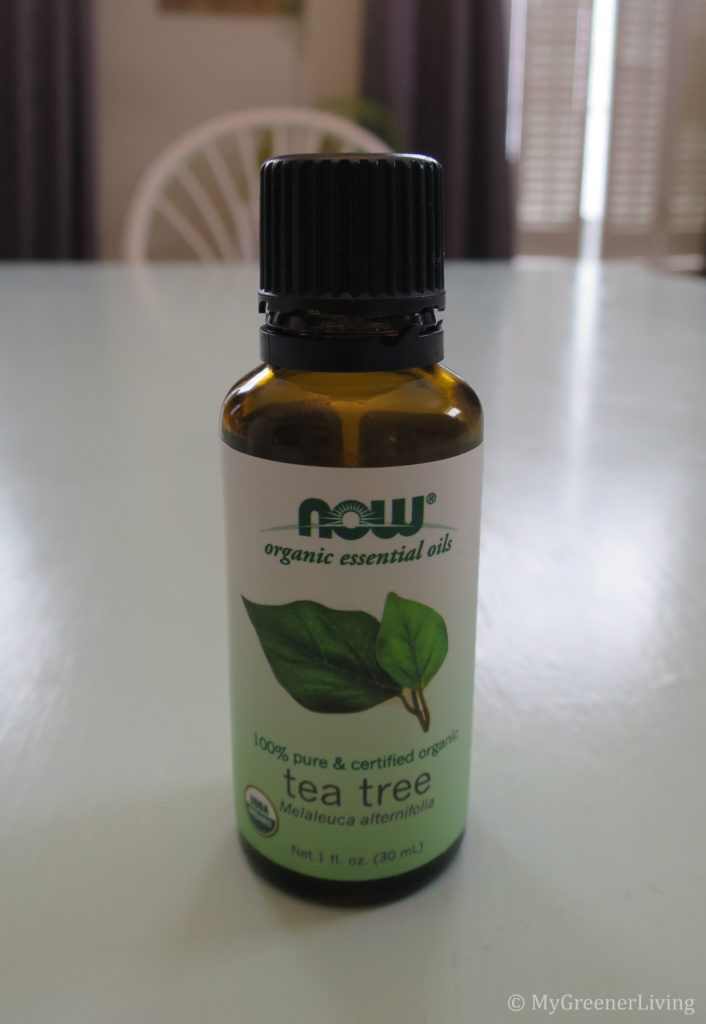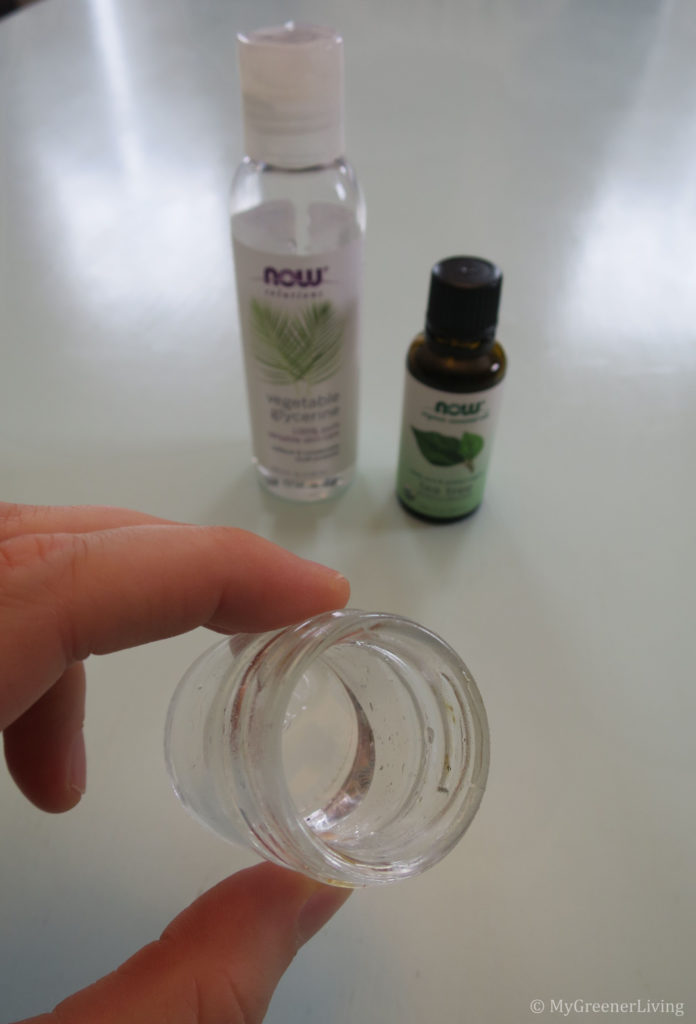Contact dermatitis is an annoying, unpleasant thing that some of us have to deal with. My skin is very sensitive, and I get contact dermatitis from many things, including poison ivy, contact with many animals, some body lotions and soaps, stainless steel and other metals…the list goes on. Several months ago, I learned that contact dermatitis is a form of eczema, when I got a nasty patch of it on my cheek. Not sure exactly what came in contact that irritated my skin, but it was likely triggered by the cold weather combined with stress.
Disclaimer: This post contains affiliate links. See my Disclosure Policy for more information.
Contact Dermatitis Treatment

First attempt – natural – coconut oil and tea tree oil
I hoped that it would go away on its own, and I continued to apply coconut oil (antibacterial – so at least I believed I was keeping it germ-free). It did not get better. I tried using my tea tree oil stick and it seemed to get worse. After about a week, a patch of my cheek was red, with a yellowish and weepy tinge (if you’ve ever gotten contact dermatitis like this you know – it looks gross!)


Second attempt – synthetic – steroids
I broke down and went to the doctor. She was very concerned about me developing an infection (which, I was told, would require antibiotics) and prescribed me a mild topical steroid cream. This was a double-edge sword. I am highly allergic to the -cillin family of antibiotics (amoxicillin, penicillin) and am concerned that I may be allergic to others. I do my best to avoid needing to use antibiotics. But the steroid cream is filled with synthetic chemicals that I typically avoid. I really didn’t want to develop an infection, so I used the steroids, applying as light a coat as possible until the weeping stopped and my cheek looked mostly healed.
Side note – if you want to see a picture of the type of allergic amoxicillin rash I get, look at the photos at this link. Maybe this will help you understand why I elected to use the steroid cream despite it containing mostly ingredients that I normally avoid. Also, please note that there is also a non-allergic amoxicillin rash which is much more common than the allergy. If you have a rash I recommend talking to or visiting your doctor to determine if you have an allergy or the non-allergic rash.
At some point during this process, the contact dermatitis spread to my chin. I applied the steroids there as well, but the reaction did not clear. After a few weeks I stopped applying the steroids. It did not clear up, but did not get worse or spread. After a month or so, I just forced myself to accept that this was just something I would have to live with. I had mostly come to accept my contact dermatitis being there for the long haul.
Third attempt – natural – Glycerin and Tea Tree Oil

About 3 months after it first showed up, my coworker was telling me about his son’s bad case of contact dermatitis from poison oak (or some other plant). They tried every over the counter product they could find for relieving itch and healing contact dermatitis. Nothing helped. The poor kid was miserable. The child’s uncle came by, and said he had seen a natural remedy. He rushed to the store and came back with glycerine (or glycerin) and tea tree oil. They mixed a few drops of tea tree oil with a large amount of glycerine and covered the affected areas. This finally gave the boy relief.
I figured I had nothing to lose giving it a try. I looked online a bit trying to find the article that my colleague’s brother had seen, or any information about using gylcerine and tea tree oil to treat contact dermatitis. I came up with nothing. But I tried it anyway. I always have tea tree oil in the house (Now Organics Tea Tree Oil is my current favorite), and I had some glycerine from some soap or lotion experiment.
Recipe
I mixed about 1 teaspoon glycerine with 2-3 drops of tea tree oil and stirred well. I then dabbed the mixture onto the areas affected with contact dermatitis and gently rubbed in. I did this about 2 times each day, in the morning and before bed. Within 3-4 applications, the bumps had gone from red to pink, and went from coarse (broken skin on each bump) to smooth bumps. After 2 days, the bumps no longer itched. The bumps never completely went away for me, but since I believe this is stress-induced contact dermatitis, stress causes it to flare up and never completely go away. Next time I get non stress-induced contact dermatitis, I will use this remedy and report back on the cure time for me!

My thoughts on the natural attempts
As I have said before, I am not a doctor nor do I have any medical training or education. This was an experiment conducted on 1 person, me. The mixture of mostly glycerine with a little tea tree oil cleared my contact dermatitis, but I can’t give you a great reason why nor guarantee that it will work for you. But, I am quite glad that I gave it a try!
I am still unsure why my tea tree oil stick made the contact dermatitis worse, and the glycerine + tea tree oil healed it. My first guess is that the contact dermatitis got worse from pesticide residue in the tea tree oil used in my tea tree oil stick. I buy organic whenever I can, but the last time I bought tea tree oil I received one bottle of conventional mixed with my organic and did not notice until I had mixed it into my stick formulation. My second guess is that the tea tree oil stick is too highly concentrated tea tree oil (it’s about 34%, many articles I have read say to dilute more, but I had not had issues with the highly concentrated, before). My third guess is that the combination of beeswax, coconut oil, and tea tree oil just did not work.
Other possible uses for Glycerine + Tea Tree Oil mixture
According to WebMD, glycerin is an emollient – a substance used to moisturize the skin – “is used as a moisturizer to treat or prevent dry, rough, scaly, itchy skin and minor skin irritations.” I have seen glycerine as an ingredient in many lotions, and I had some on hand myself from a natural lotion recipe. I could see using pure glycerine, or the glycerine and tea tree oil mixture, as a dry skin moisturize. I would use the mixture on dry skin that is slightly broken, such as dry hands that crack in the winter, since the antibacterial properties of tea tree oil will help keep the wound clean. When I got the flu and subsequently had very dry, cracked skin on and around my nose, I applied this mixture and it helped soothe the discomfort and heal my skin.
Where to purchase ingredients
I purchase my glycerine and tea tree oil on Amazon. My preference is to purchase tea tree oil there because I have had good luck with Now Organic Essential Oils Tea Tree Oil, though I would purchase this exact oil from another store if available. I choose to use organic oil to reduce the risk of allergens contaminating the oil and causing me a reaction.
Glycerine is available at most pharmacies or stores with a pharmacy (drug store, grocery store). It is typically behind the counter of the pharmacy, but can be purchased without ID or a prescription. I am not sure why it is hidden back there, but that’s where I recommend looking if you don’t want to order online (such as, if you are SO ITCHY and want to try this NOW). I chose to purchase on Amazon because I wanted to ensure that my glycerine was from vegetable sources. Not all glycerine is vegetarian. So if that matters to you, ensure you purchase vegetable glycerine.
Cost
If you don’t already have the ingredients in hand, this will cost you about $16.
1 oz of Now Organic Tea Tree Oil is about $10.50
4 oz of vegetable glycerine is $5.50
The cost to mix up this remedy depends on how much you need, how large an affected area being treated. My 1 teaspoon mixture lasted me over a month of use on the small area of my chin. It only cost me about $0.28 to heal my contact dermatitis.
[($5.50/4oz) x(1 oz/6 tsp)=$0.23 for the glycerine, ($10.50/1 oz)x(1 oz/600 drops)x(3 drops)=$0.05 for the tea tree oil]
In what ways have you used glycerine? Please share in the comments below!
